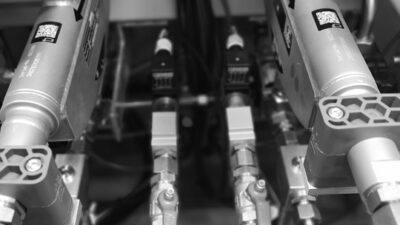As technology continues to evolve at a breakneck pace, the intersection of humanity and robotics is becoming increasingly significant. From personal assistants like Siri and Alexa to advanced robotic systems used in healthcare, manufacturing, and even households, the way we interact with robots is changing dramatically. This article explores how the human-robot connection is evolving in the digital age and what it entails for our future.
The Rise of Social Robots
One of the most notable trends in the evolution of human-robot interaction (HRI) is the rise of social robots. Unlike traditional robots designed solely for tasks or labor, social robots are engineered to engage with humans in meaningful ways. These robots can understand human emotions, respond to social cues, and even hold conversations. Examples include robots like Sophia, created by Hanson Robotics, which can display a range of human-like facial expressions and engage in dialogue, making them more relatable to humans.
Emotional Intelligence and Empathy
The integration of artificial intelligence (AI) has empowered robots to exhibit emotional intelligence, creating rapport through empathy. Utilizing advanced algorithms, these robots can analyze tone of voice, gesture, and even facial expressions to gauge human emotions. The ability to respond appropriately to human emotions can transform industries such as healthcare, where robots are being used as companions for the elderly or as therapeutic tools for children with special needs.
Case Study: Companion Robots for the Elderly
Companion robots like ElliQ and PARO are designed specifically for the elderly, providing not just assistance but companionship. These robots engage users in conversation, remind them to take medications, and even play games, helping to alleviate feelings of loneliness and isolation. As the world population ages, the demand for such empathetic robots is likely to increase.
Integration in Everyday Life
The digital age has seamlessly integrated robots into our daily lives. From smart home devices to autonomous vehicles, we are increasingly surrounded by robotic technology. This integration raises critical questions about our dependence on these systems and the implications for our social interactions.
Smart Homes and Personal Assistants
Smart home systems, equipped with voice-activated personal assistants, are a prime example of this integration. Devices like Amazon Echo and Google Nest provide convenience while also learning from user interactions to offer personalized suggestions. The evolution of these interactions has led to a more hands-free, intuitive experience, and as they develop more sophisticated capabilities, they will become even more integral to our daily routines.
Ethical Considerations and Challenges
As we delve deeper into our connection with robots, ethical considerations emerge. Questions about privacy, dependence, and the implications of developing machines that can mimic human emotions are hotly debated. The more we humanize robots, the more difficult it becomes to delineate boundaries between human and machine interaction.
Privacy Concerns
With the increasing use of AI in robots, concerns about privacy and data security are paramount. For instance, personal assistants often record and analyze user data to enhance interaction. This raises issues about the ownership of that data, potential misuse, and what it means for personal privacy.
Dependence on Technology
Another concern is the potential for human dependency on robots for emotional support, companionship, and even decision-making. If individuals begin to rely more on machines for these needs, what does that mean for human relationships?
The Future of Human-Robot Interaction
As the digital age progresses, we can anticipate that HRI will become even more sophisticated. Advances in natural language processing, machine learning, and robotics will lead to more nuanced interactions. The evolution of HRI will likely encompass:
- More Natural Communication: Future robots will possess better conversational abilities, making interactions feel more organic and human-like.
- Enhanced Personalization: Advanced algorithms will tailor responses based on individual preferences and histories, fostering deeper connections.
- Integration into Workforce: As robots become more capable, their roles in workplaces will expand, changing how we collaborate and communicate in professional settings.
Conclusion
The human-robot connection is evolving rapidly, driven by advancements in technology and our changing social needs. As we embrace the benefits of these interactive systems, it is essential to consider the ethical implications and emotional dynamics at play. By fostering a thoughtful approach, we can harness the potential of robots to enhance our lives while retaining the essence of what makes us human—our capacity for empathy, connection, and understanding. The future of HRI promises to be as transformative as it is complex, challenging us to rethink our relationship with technology in the 21st century.



